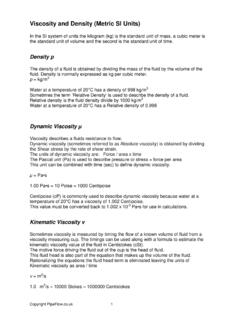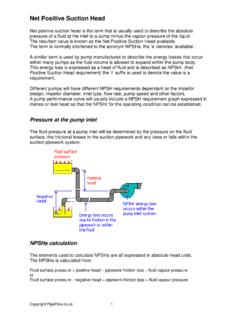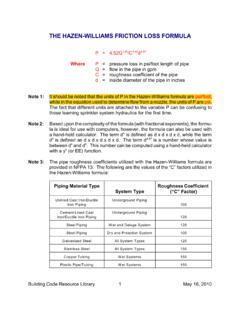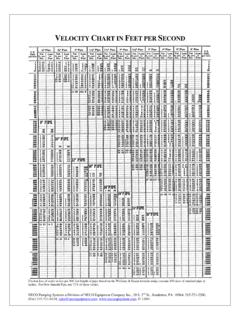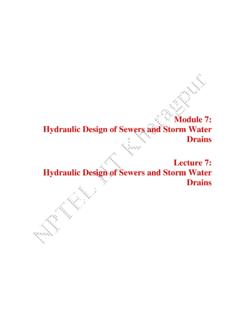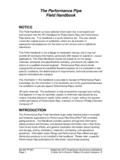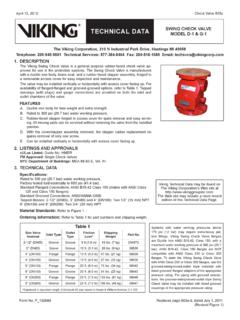Transcription of Hazen Williams Formula - pipeflow.co.uk
1 Copyright 1 Hazen - Williams Formula Empirical formulae are sometimes used to calculate the approximate head loss in a pipe when water is flowing and the flow is turbulent. Prior to the availability of personal computers the Hazen - Williams Formula was very popular with engineers because of the relatively simple calculations required. Unfortunately the results depend upon the value of the friction factor C hw which must be used with the Formula and this can vary from around 80 up to 130 and higher, depending on the pipe type, pipe size and the water velocity.
2 The imperial form of the Hazen - Williams Formula is: hf = L (100/C) x ( ) where: hf = head loss in feet of water L = length of pipe in feet C = friction coefficient gpm = gallons per minute (USA gallons not imperial gallons) d = inside diameter of the pipe in inches The empirical nature of the friction factor C hw makes the Hazen - Williams Formula unsuitable for accurate prediction of head loss. The results are only valid for fluids which have a kinematic viscosity of centistokes, where the fluid velocity is less than 10 feet per sec and the pipe size is greater than 2 diameter.
3 Water at 60 F ( C) has a kinematic viscosity of centistokes. Common Friction Factor Values of C hw used for design purposes are: Asbestos Cement 140 Brass tube 130 Cast-Iron tube 100 Concrete tube110 Copper tube130 Corrugated steel tube 60 Galvanized tubing 120 Glass tube130 Lead piping130 Plastic pipe140 PVC pipe 150 General smooth pipes 140 Steel pipe 120 Steel riveted pipes 100 Tar coated cast iron tube 100 Tin tubing130 Wood Stave 110 These factors include some allowance to provide for the effects of changes to the internal pipe surface due to the build up of deposits or pitting of the pipe wall during long periods of use.
4

